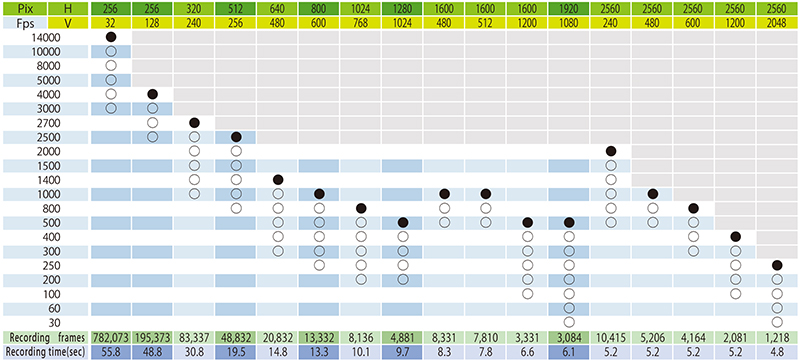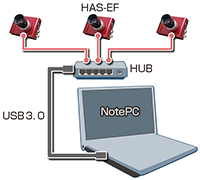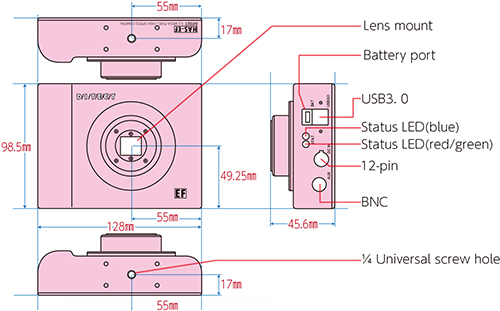Description
Key Features of the HAS-EF High-Speed Camera
The HAS-EF high-speed camera stands out in the realm of imaging technology, primarily due to its robust features tailored for capturing fast-moving subjects with remarkable clarity. At the heart of this camera is a 1-inch CMOS sensor, which boasts an effective resolution of 2560×2048 pixels. This resolution ensures that images captured retain high detail, which is critical for applications in fields such as sports science, fluid dynamics, and various industrial analyses.
One of the most significant capabilities of the HAS-EF camera is its impressive frame rate performance. It can capture up to 250 frames per second (fps) while maintaining full resolution. For scenarios requiring more agility, the camera achieves 500 fps in full HD, and impressively, it can record at a staggering 1,400 fps in VGA mode. This level of performance is essential for researchers and engineers who need to analyze rapid events in great detail.
Moreover, the HAS-EF camera offers a unique feature that allows users to limit the pixel area, thus enhancing the frame rate further to an extraordinary 14,000 fps. This capability makes it a versatile tool, particularly useful in studies where minute details must be observed during high-speed events.
Designed with practicality in mind, the HAS-EF includes 6GB of embedded memory, facilitating extensive recording without the immediate need for external storage solutions. Its compact design ensures that it can be easily integrated into various setups, whether in a laboratory, on a sports field, or in an industrial environment. Thus, the HAS-EF high-speed camera emerges as a cutting-edge solution for various imaging needs, making it an essential asset for innovation and research across multiple domains.
Applications of the HAS-EF Camera in Research and Industry
The HAS-EF camera stands out as a pivotal tool in numerous research and industrial applications, showcasing its versatility across a diverse array of fields. In behavior analysis, for example, this high-speed imaging technology enables researchers to capture intricate movements and interactions of animals, yielding valuable insights into their behavior under varying conditions. By providing a detailed visual account, it facilitates a deeper understanding of behavioral patterns, contributing significantly to ethological studies.
Similarly, in the realm of fluid dynamics, the HAS-EF camera proves indispensable. Researchers utilize its incredible frame rates to visualize and analyze fluid flow, turbulence, and vortex formation. This capability allows for more comprehensive studies of fluid mechanics, assisting in the development of advanced models and simulations that are crucial in industries like aerospace and automotive engineering.
Biomechanics is another field that greatly benefits from the use of the HAS-EF camera. By capturing high-speed movements, it aids researchers in understanding the mechanics of human and animal locomotion, which can lead to improvements in sports performance, rehabilitation techniques, and ergonomic design.
In industrial applications, the versatility of the HAS-EF camera shines in areas such as robotics and machine vision. Its high-resolution imaging plays a critical role in guiding robotic movements and assessing product quality on assembly lines. Additionally, its usage in crash testing provides vital information about the safety of vehicles, enabling manufacturers to enhance their designs effectively.
The camera is also employed in droplet analysis and microscopy, allowing for precise measurements and evaluation of various phenomena at microscopic levels. In production engineering, it serves as a valuable asset for troubleshooting and optimizing processes, ensuring that industries can maintain high standards of efficiency and quality. Overall, the HAS-EF camera is integral to advancing both research methodologies and industrial practices.










